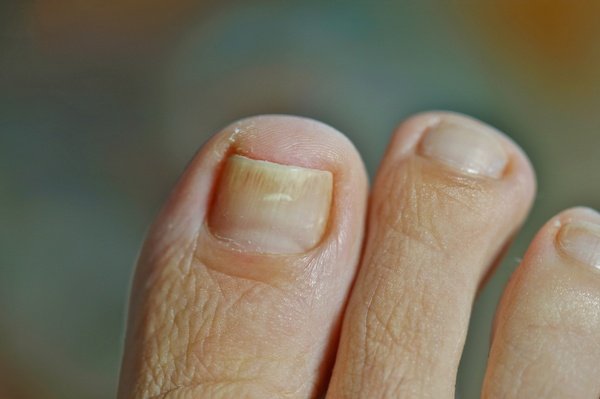Top Causes of Toenail Fungus and How to Prevent It
Do you feel self-conscious about your feet? You're not alone. Millions of people worldwide struggle with the yellow, thickened, and unsightly nails caused by toenail fungus. Not only is this condition embarrassing, but it also leads to discomfort and pain.
Fortunately, you can prevent it by managing the risk factors and causes. Below we're exploring how to avoid this pesky condition and keep your feet fungal infection-free.
What is Toenail Fungus
It is a common fungal infection — an estimated 10% of the population is affected. Tiny cuts or breaks in the skin allow the fungus to enter the nail bed leading to a prolonged infection.
Common symptoms include:
Thickened nails
Brittle nails
Discolored nails (yellow or brown)
Foul-smelling nails
Nails that are distorted in shape
Nails that are separated from the nail bed
Pain and discomfort in the affected area
To prevent their spread, seek immediate treatment from a doctor or podiatrist if you suspect your toenails or skin are affected by problems, such as infections.
What Causes Toenail Fungus?
Identifying its risk factors and causes is the surest way to prevent infection. While it seems like a minor issue, if left untreated, the infection will continue — potentially leading to serious complications.
Causes:
Fungal infections
When a toenail infection is caused by a dermatophyte (a type of fungus), it is termed tinea unguium. Other causative pathogens include Candida and certain molds. Fungi thrive in warm and moist environments, so feet are an ideal breeding ground.
Poor foot hygiene
Infrequently washing your feet or wearing dirty socks or damp shoes increases the risk of it.
Trauma
Trauma to the nail or surrounding area allows foot fungus to enter and infect the nail bed, causing infection.
Weakened immune system or poor circulation
It thrives where the immune system is weakest. Immunosuppressed individuals or those with poor circulation to the feet struggle to ward off infection.
Genetics
Certain genetic factors increase the risk of this condition.
Risk factors:
Aging
The risk of infection increases as you age, particularly over 60s.
Chronic conditions
Conditions like cancer, diabetes, psoriasis, or HIV dampen the immune system or affect peripheral circulation, increasing its risk.
Circulatory problems
Poor circulation can make it more difficult for the body to fight off toe fungus infections.
Smoking
Smoking weakens the immune system and increases the risk of developing it.
Working in damp or humid environments
People who live in hot, humid climates are at greater risk as it thrives here.
How to Prevent It?
Be proactive — preventing a fungal infection is far easier than treating one. To lower your risk of dealing with this persistent and undesirably condition, follow these vital steps:
1. Keep your feet clean and dry
Regularly wash your feet with soap and water, and thoroughly dry them after showering or swimming.
2. Wear appropriate shoes
Choose well-fitting, breathable shoes to keep your feet comfortable and prevent fungal nail infection. Avoid tight shoes or non-breathable materials such as plastic.
3. Change your socks regularly
Wear clean, dry socks made from breathable materials like cotton or wool. Change your socks daily or more frequently if they become damp or sweaty.
4. Avoid walking barefoot in public areas
Wear flip-flops or sandals in communal areas like swimming pools, locker rooms, and showers.
5. Trim your nails properly
Cut your nails straight across, maintaining a short length to minimize the likelihood of this infection.
6. Keep your personal items to yourself
Refrain from sharing nail clippers, shoes, or socks.
7. Bolster your immune system
Commit to a nutritious diet, regular physical activity, and a smoke-free lifestyle to fortify your immune system and decrease your susceptibility to fungal infections.
What are the Best Toenail Fungus Treatment Options?
Despite diligent prevention, infections may still occur. If you do find yourself struggling with an infection, try these proven treatment options:
Oral antifungal medications
Drugs like terbinafine and itraconazole, available by prescription, are the most potent treatments for it. They promote the growth of a new, uninfected nail that eventually replaces the affected one.
Antifungal nail polish
Prescription-grade ciclopirox is an antifungal nail polish applied directly to the infected nail. Be patient, as it may take several months to yield results.
Antifungal nail cream
Prescription-strength efinaconazole cream can be applied to the infected nail, but it may take up to a year to be effective.
Toenail Fungus Treatment at Foot and Ankle Centers
At Foot and Ankle Centers, we understand the discomfort and embarrassment that comes with it. That's why we offer a range of treatment options to help our patients get back on their feet and feel confident again.
Our podiatrists will work with you to develop a personalized treatment plan that meets your individual needs and goals. We understand that fungal infections can be a persistent and difficult condition to treat. That is why we offer a comprehensive and compassionate approach to care, including advanced treatment options such as laser therapy for toenail fungus.
Don't let toenail fungus hold you back. Schedule an appointment with us today to discuss your treatment options and get back on the path to healthy feet.


